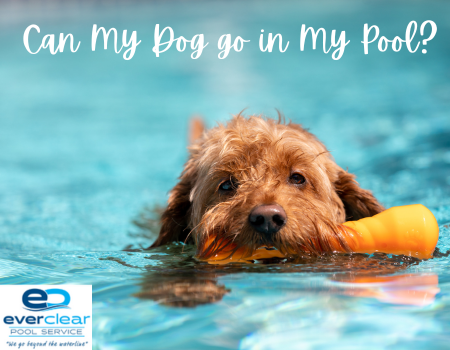As temperatures rise and the sun beckons, many dog owners wonder, “Can my furry friend join me in the pool?” While the thought of a cool dip with your furry friend might seem like a fun summer activity, it’s important to weigh the pros and cons before letting your dog take a plunge in the pool. In this article, we’ll explore the considerations, benefits, and precautions associated with letting your dog take a dip in your pool.
Considerations Before Allowing Your Dog in the Pool:
 Swimming Ability: Not all dogs are natural swimmers, and individual breeds may have varying levels of comfort in the water. Consider your dog’s swimming ability and comfort level before introducing them to the pool.
Swimming Ability: Not all dogs are natural swimmers, and individual breeds may have varying levels of comfort in the water. Consider your dog’s swimming ability and comfort level before introducing them to the pool.
- Health and Age: Puppies and older dogs may have different energy levels and health considerations. Consult with your veterinarian to ensure your dog is in good health and physically capable of swimming.
- Pool Chemicals: The chemicals used to maintain pool water can be harsh on a dog’s skin and coat. Ensure that the pool water is properly balanced, and avoid allowing your dog to ingest pool water, as chlorine and other chemicals can be harmful.
- Access and Exit Points: Dogs should be able to easily enter and exit the pool. Provide steps or a ramp to facilitate safe access, reducing the risk of accidents or fatigue.
- Supervision: Never leave your dog unattended near or in a pool. Accidents can happen quickly, and even strong swimmers can get into trouble. Always be within arm’s reach of your dog when they are near the pool, and use a life jacket if you are unsure of their swimming skills. Your vigilant presence can prevent potential mishaps.
Benefits of Allowing Your Pup to Swim:
- Exercise: Swimming provides an excellent low-impact exercise for dogs. It can be particularly beneficial for older dogs or those with joint issues, providing a gentle way to stay active.
- Cooling Off: Dogs, especially those with thick fur, can overheat in hot weather. A refreshing swim helps them cool off, preventing heat-related issues.
- Joint Health: Swimming promotes joint flexibility and can be therapeutic for dogs with arthritis or other musculoskeletal conditions.
- Bonding Time: Swimming together creates positive experiences and strengthens the bond between you and your dog.
Precautions to Ensure a Safe Pool Experience for Your Furry Friend:
- Training: Ensure your dog is comfortable in the water before allowing them into the pool. Gradual introductions and positive reinforcement can help build their confidence.
- Ear Care: After swimming, dry your dog’s ears thoroughly to prevent ear infections. Some dogs are prone to ear issues, and water trapped in the ears can contribute to infections.
- Regular Breaks: Dogs can tire quickly, so encourage regular breaks during swimming sessions. Allow them to rest, hydrate, and catch their breath.
- Grooming: Rinse your dog with fresh water after swimming to remove pool chemicals. Pay attention to their paws, ensuring they are free of chlorine or other irritants.
- Health Monitoring: Keep an eye on your dog’s health and behavior after swimming. If you notice any signs of discomfort, irritation, or illness, consult with your veterinarian promptly.
Allowing your dog to join you in the pool can be a delightful experience for both of you, fostering exercise, bonding, and enjoyment. However, responsible ownership involves careful consideration of your dog’s well-being and the safety measures necessary for a positive pool experience. By taking the time to assess your dog’s swimming abilities, health status, and the pool environment, you can create a safe and enjoyable aquatic adventure for your canine companion. Remember, every dog is unique, so tailor your approach to their individual needs and preferences to ensure a splashingly good time for everyone.
